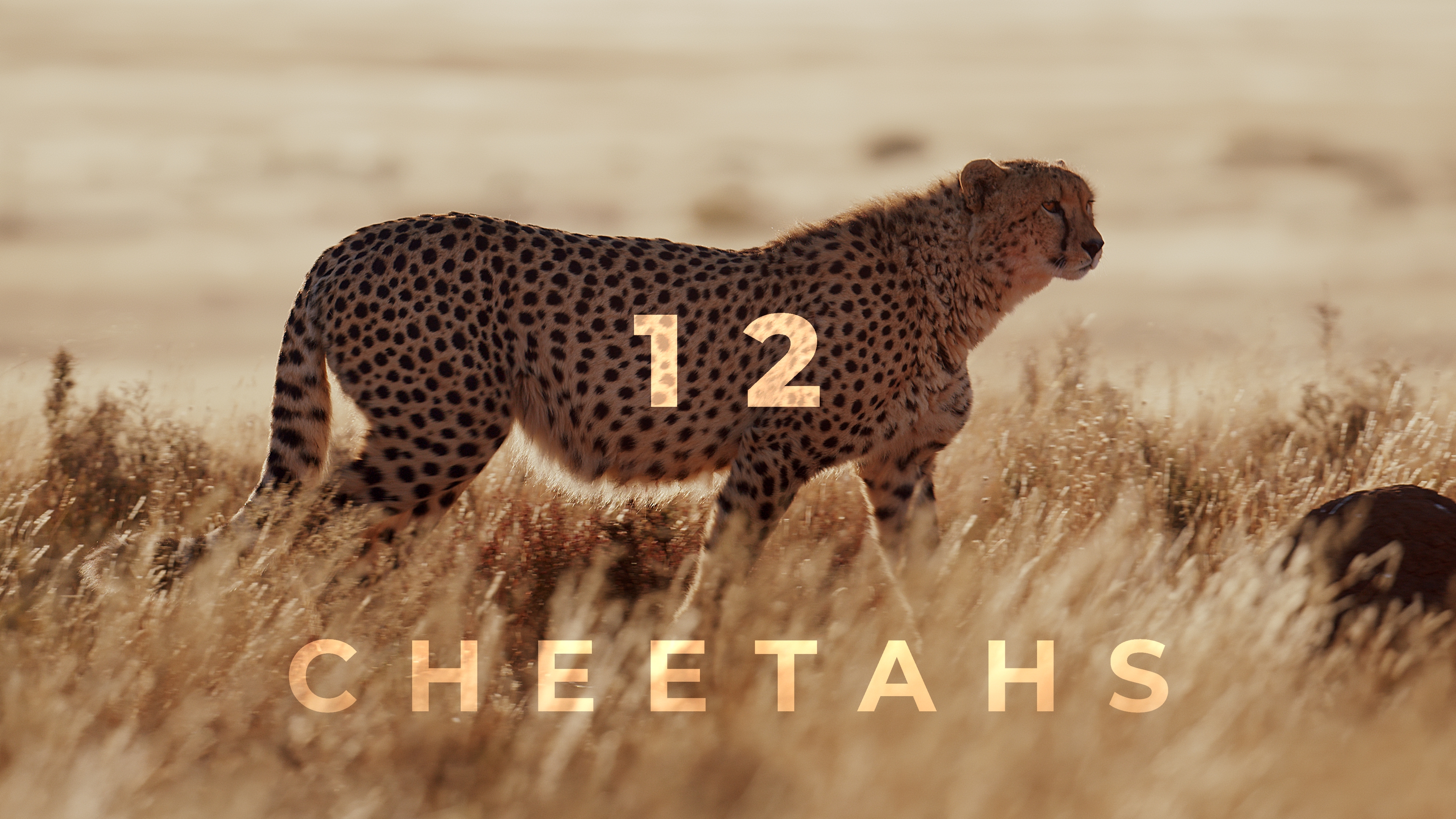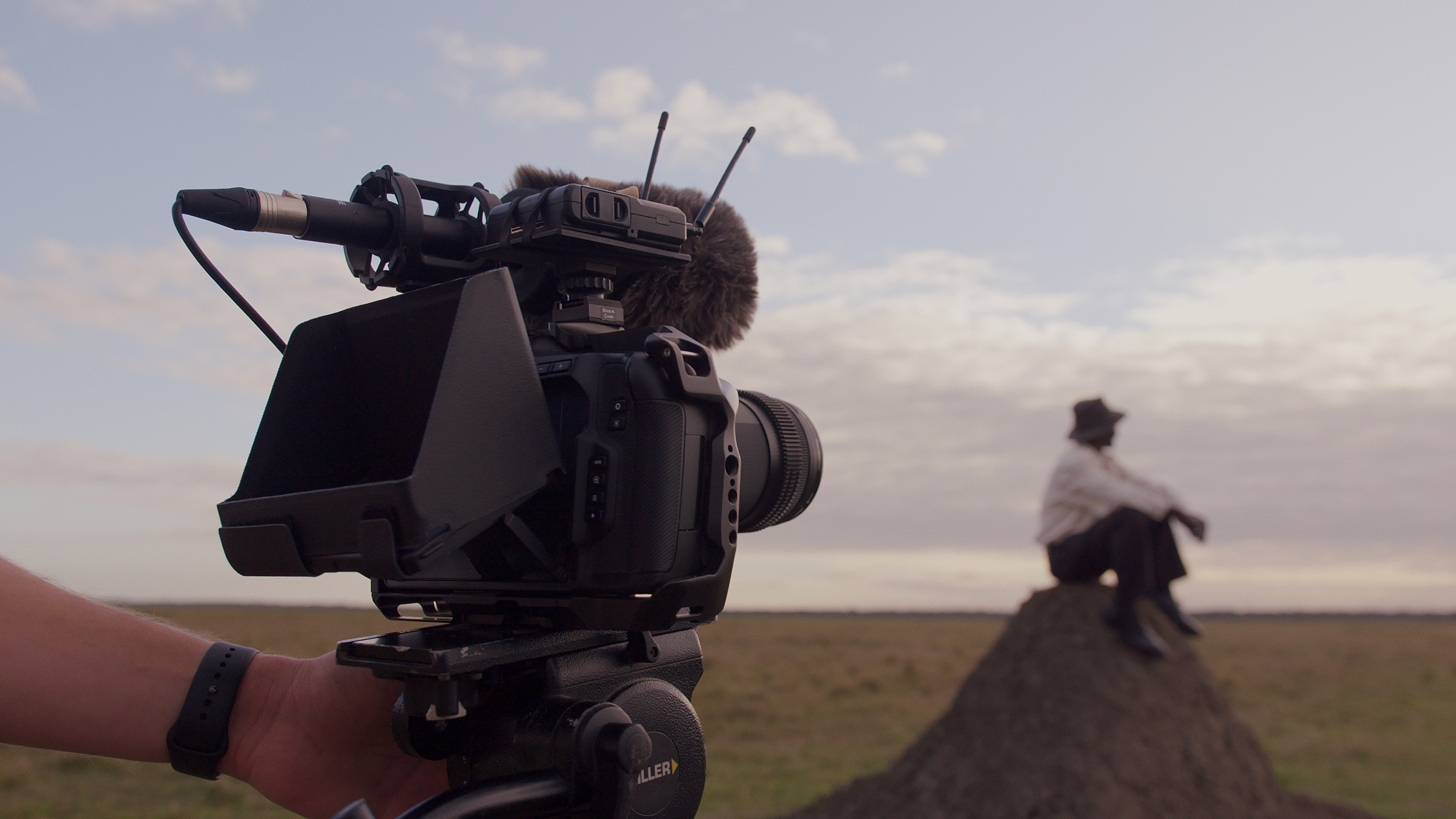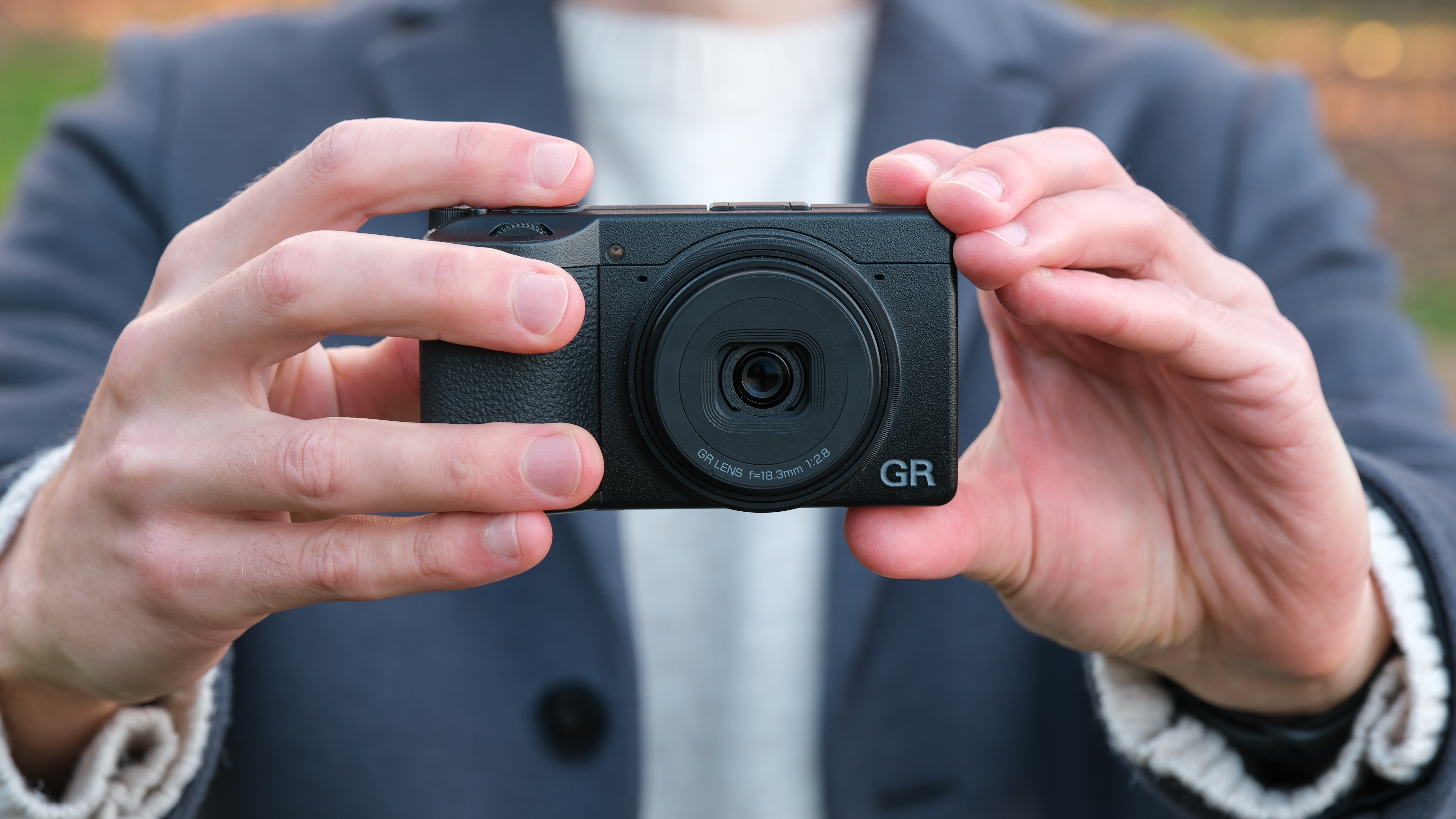VIDEO: Breathtaking South African wildlife doc follows cheetahs back to Mozambique
New wildlife doc showcases 12 cheetahs' reintroduction to the Zambeze Delta, all shot on Blackmagic 6K Pro cameras

Switching camera systems is a big decision – and even more significant when working in harsh environments worldwide, often hundreds of miles from any support network.
However, a year ago, conservation filmmaker Sean Viljoen made the jump to shooting with a Blackmagic Pocket Cinema Camera 6K Pro.
There were a few reasons behind Sean marking the switch, but right at the top of the list was the image quality compared to the size and weight of the camera. "Our projects call for a lot of international travel with small crews, to remote locations. I'm constantly on the search for ways to minimize gear while maximizing production value.
• These are the best cinema cameras
"The BMPCC 6K Pro is well suited for those requirements and I've been really impressed with the image quality and Black Magic Design ecosystem as a whole. The cameras have proved to be reliable in extreme environments and provide the ability to capture 12-bit RAW footage. Considering that this capability is housed within a DSLR form factor with built-in ND filters, it has become the workhorse for our whole team."
To view the whole documentary and see how well Sean and the BMPCC 6K Pro handled the heat of South Africa, take a look below:
Sean's production company, Conservation Film Company, adopts a very run-and-gun style approach to parts of its documentary work, requiring the ability to work quickly and discreetly without getting in the way of the conservationists doing their job. Sean also believes that cultivating personal connection is the best way to spread learning about conservation.
The best camera deals, reviews, product advice, and unmissable photography news, direct to your inbox!
"I think the best way of getting people to learn about conservation is through connecting with people's stories. I'm not taking anything away from the amazing natural history documentaries. But I think there comes a point when people switch off as there has been so much of that type of filmmaking over the last few decades. It's a different way of engaging a different audience with conservation subject matter."
One of the first projects that Sean shot with the camera is this remarkable, titular tale of 12 cheetahs. The film was shot and edited over three months and followed the journey of the people involved in reintroducing twelve cheetahs from South Africa and Malawi back into the Zambeze Delta ecosystem in Mozambique, where indigenous cheetahs haven't been seen in generations.
"These projects always have something difficult as there is all the travel and logistical elements; we're generally shooting in outdoor locations that are pretty remote. So we have all of these travel challenges and are very limited with the amount of gear we can bring. And then there are the elements. Filming 12 Cheetahs in Mozambique, it was so humid. There were constant rain showers, so you head out for the day, and you think you're good to go. Clear skies, and then by that afternoon, it's pouring. We would set up an interview and be ready to go, and it would just start drizzling again."
Shooting in Mozambique wasn't the only time Sean and his team worked with the cameras in extreme weather. While other cameras may have issues with overheating, there were no problems with shutting down, even in the fierce midday heat.

Sean recalls the day: "We did get stuck in a rainstorm or two, nothing too heavy, but the camera got wet quite a few times, and we haven't had any issues following that. And on a trip to the Sahara desert, there were sandstorms. The camera got covered in dust every day, and I only really cleaned it properly on my return home. But again, there were no issues with the camera. They are hardy, and I can attest to that!"
This was the first time that Sean had captured RAW footage with the camera, but one of the significant considerations was capturing high-quality footage while keeping file sizes down, so that they could store and back up all the footage on the go.
"I found that probably a sweet spot is 8:1 compression. I think you get more latitude in post than shooting at 12:1, but I'm not dealing with the file sizes of 5:1 or 3:1 compression. I choose to shoot in 6K, maximizing the Blackmagic RAW and knowing that I'd be delivering oversampled 4K or even HD. It also gives the content longevity; you never know what projects you may need to use some existing footage from in the future."
There is another reason that Sean likes to keep his gear as straightforward as possible, and that is there is less to go wrong, fewer devices to power and batteries to charge. All the audio for 12 Cheetahs was recorded in-camera rather than an external recorder. "It simplifies the workflow and makes everything a lot easier."
Interviews in the documentary were recorded using a boom mic but with a lavalier mic as a redundancy. "We had each mic on a separate channel, and I had a five-meter XLR cable with a mini XLR adapter to go straight into the camera."
One of the few accessories that Sean does carry with him is a matte box and a 1EV ND filter. "The fact that the BMPCC6K Pro has built-in NDs is amazing for a camera with a DSLR-style form factor. I don't think many cameras on the market have such an added value, especially as variable ND filters can sometimes be a nightmare. The additional filter I carry allows me to go to 7 stops, which is helpful in very bright midday sunlight, and it allows me to be very precise with my exposure."
With everything that was shot for 12 Cheetahs, Sean took the project into post-production, editing and color grading in DaVinci Resolve. Interestingly Sean decided to just use three lenses for this breath-taking documentary.
"My primary lens choices for the BMPCC 6K Pro have been the Sigma 18-35mm f/1.8 Art, Canon EF 70-200mm f/2.8 and recently the Canon EF 200-400mm f/4 for wildlife content. The Sigma 18-35mm is a really versatile lens for documentaries – great for low light scenarios, as well as wide and close-up shots within the focal range with a minimum focus distance of 28cm.
"For the wildlife and conservation stories we tell, I really enjoy the ability to get close to my subjects to create an intimate visual connection to the often emotive subject matter. In combination with the reach of the Canon 200-400mm, this becomes possible for both our human and wildlife characters alike".
It goes without saying that the visuals Sean captured are stunning and highlights a very topical need for more documentaries to be produced on wildlife and the world in which we live and enjoy.
Read more:
Blackmagic Pocket Cinema camera 6K pro review
Best Canon EF lenses
DaVinci Resolve 18
Best audio recorders for filmmakers

For nearly two decades Sebastian's work has been published internationally. Originally specializing in Equestrianism, his visuals have been used by the leading names in the equestrian industry such as The Fédération Equestre Internationale (FEI), The Jockey Club, Horse & Hound, and many more for various advertising campaigns, books, and pre/post-event highlights.
He is a Fellow of the Royal Society of Arts, holds a Foundation Degree in Equitation Science, and holds a Master of Arts in Publishing. He is a member of Nikon NPS and has been a Nikon user since his film days using a Nikon F5. He saw the digital transition with Nikon's D series cameras and is still, to this day, the youngest member to be elected into BEWA, the British Equestrian Writers' Association.
He is familiar with and shows great interest in 35mm, medium, and large-format photography, using products by Leica, Phase One, Hasselblad, Alpa, and Sinar. Sebastian has also used many cinema cameras from Sony, RED, ARRI, and everything in between. He now spends his spare time using his trusted Leica M-E or Leica M2, shooting Street/Documentary photography as he sees it, usually in Black and White.
